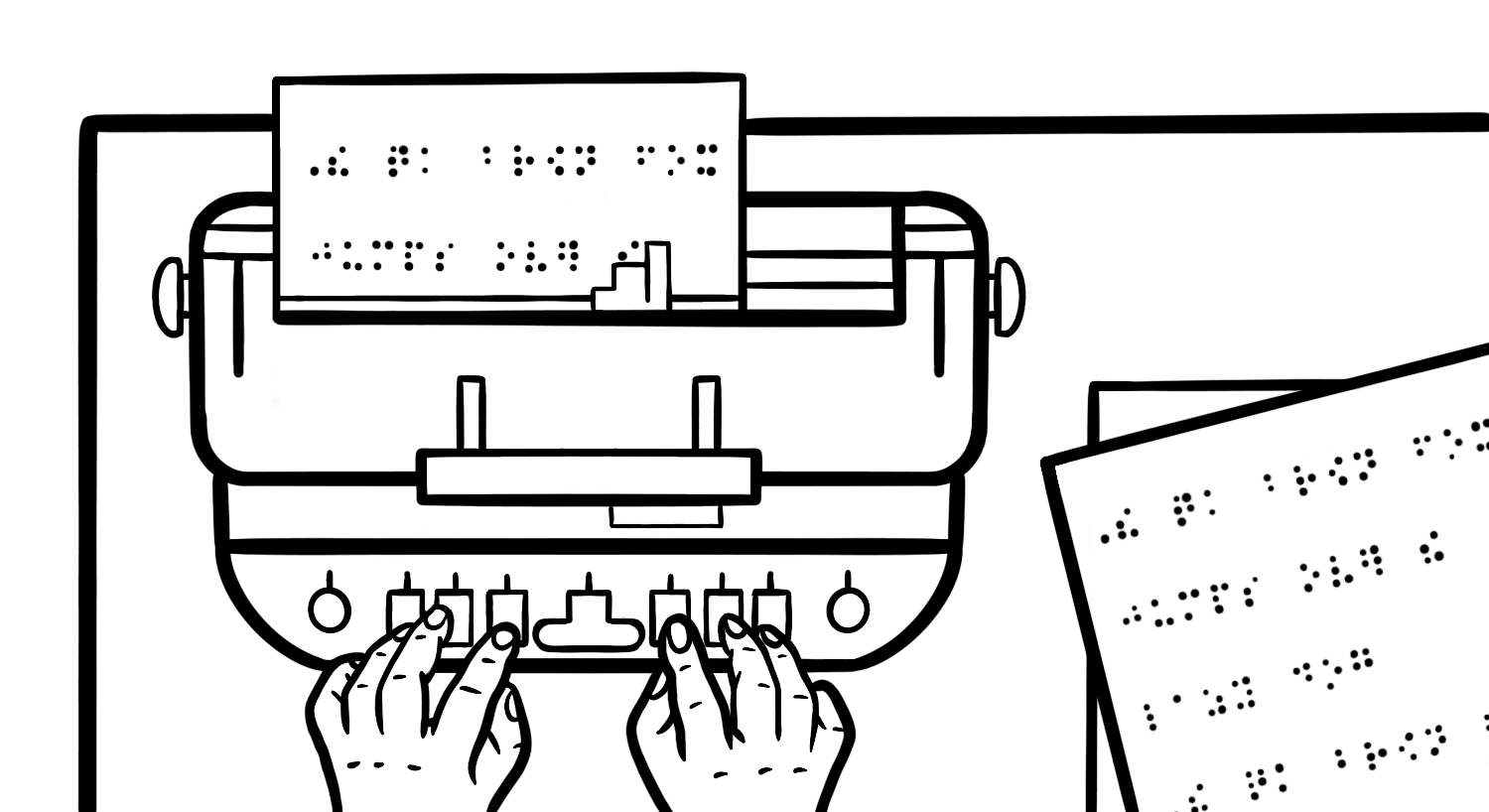Originally, Braille was written using a slate and Stylus. The slate was a metal template, with holes for every dot in a six-dot cell (note: Six-dot cells are the original structure of Braille writing, though modern computerized Braille will occasionally use eight-cell structures to allow for a wider range of characters and expressions).
To use a Brailler, paper was inserted into the slate and the stylus was used as a sharp needle, poking out the dots that were needed in each cell to form a particular character. However, this method had several shortcomings: First, it is an extremely slow process. Punching out each individual dot and ensuring the paper was correctly aligned in the slate to leave the appropriate gaps between lines was – and still is – a time-consuming process. Second, dots in paper must be punched out from the back of the paper, not the front. This means that writing Braille used a reverse method from reading Braille, making the whole process more difficult.
The invention of the Brailler solves both problems. It allowed paper to be rolled into a machine, similar to a typewriter, and had nine keys on the front to produce Braille (six keys for each dot in a cell, plus a space key, line return, and backspace). This innovation eliminated the problems of paper alignment (at least in a correctly functioning machine), sped up the Braille writing process significantly, and allowed Braille characters to be written the same way they are read.
Unfortunately, Braillers still have one major disadvantage: due to the mechanical action of producing Braille, they are extremely noisy. This means that while most blind people prefer to write Braille with a Brailler, some are still familiar with the older slate and stylus method for when they need the ability to take notes quietly. However, with the advent of Braille note takers and other digital devices, the slate and stylus method is slowly becoming a lost skill in the blind community.
The most popular Braillers are the Perkins-brand Braillers, originally invented and produced at the Perkins school for the blind. They have a metal case and construction, making them extremely rugged and able to provide years of trouble-free service if they are dusted and oiled occasionally. In fact, Sam Proulx, Fable’s accessibility evangelist, owns and uses the same Brailler that his father (who is also blind) was first given for school in grade eight. The Brailler was passed from father to son and sits on Sam’s desk to this day, never needing any repair other than cleaning and oiling, a process that can be done by the user themselves.

